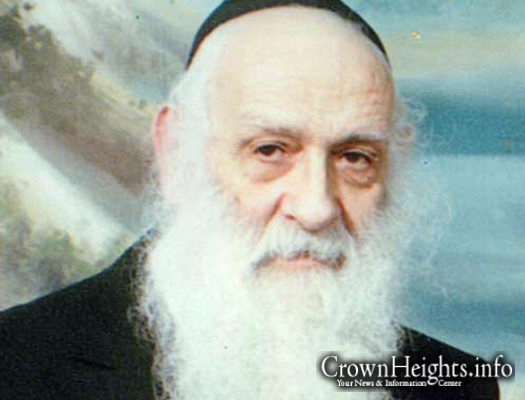
Our Heroes: Rabbi Moshe Yehuda Hakohen Blau (1913 – 2003)
Rabbi Moshe Yehuda Hakohen Blau was born in 1913 in Hamburg, Germany to Horav Yirmiah Hakohen and Mrs. Leah Blau. When he became aware that one of the great Musar teachers, Reb Yerucham Halevi Lebowitz was the mashgiach in the Mirrer Yeshiva, he requested permission and the support of his parents to study there. In 1932 at the age of nineteen, he left Germany for Mir, Poland.
After a short period of time he was stricken with hepatitis. When the illness intensified, he traveled to Radin to receive a blessing from the Chofetz Chaim. When he reached Radin he was disappointed to learn that the Chofetz Chaim had left for vacation. Reb Moshe Yehuda followed the Chofetz Chaim and was told by his secretary that the Chofetz Chaim did not customarily give blessings in order that he not feel any sense of self-esteem if the blessing was successful. He advised the bochur to remain there and find a way of doing a favor for the Chofetz Chaim who would then feel indebted and give a Brocho.
Brocho from the Chofetz Chaim
On that day, the Chofetz Chaim needed his grandson and Reb Moshe Yehuda volunteered to be the messenger. The Chofetz Chaim asked if the bochur Reb Moshe Yehuda had a request and the secretary answered that he needed a Brocho for good health. The Chofetz Chaim responded, “Halevai”-hopefully. Reb Moshe Yehuda trembled. He understood from this response that the Chofetz Chaim was refraining himself from giving a blessing. Reb Moshe Yehuda thought that perhaps the gates of heaven were closed for his prayers. A moment later, the Chofetz Chaim inquired if there was any additional request. The secretary relayed that Reb Moshe Yehuda wanted to grow in the study of Torah. The Chofetz Chaim answered “Amen”.
Reb Moshe Yehuda was happy to hear this and was encouraged to return to the yeshiva and become engrossed in his studies. He became very close to the Mashgiach Reb Yerucham, who appointed him to be responsible for the students who arrived from outside of Poland and Russia.
In addition to his exceptionally steady and deeply engrossed manner of study, he was known as a great Yireh shomayim. Hashem’s Divine Providence are wonderful, and precisely in Yeshivas Mir, the gates of Chabad Chassidus opened for Reb Moshe Yehuda. By Hashgacho Protis, a member of the Tarshish Chabad family asked Reb Moshe Yehuda if he wanted to buy a Tanya from him. Reb Moshe Yehuda agreed and then set up a shiur in Tanya.
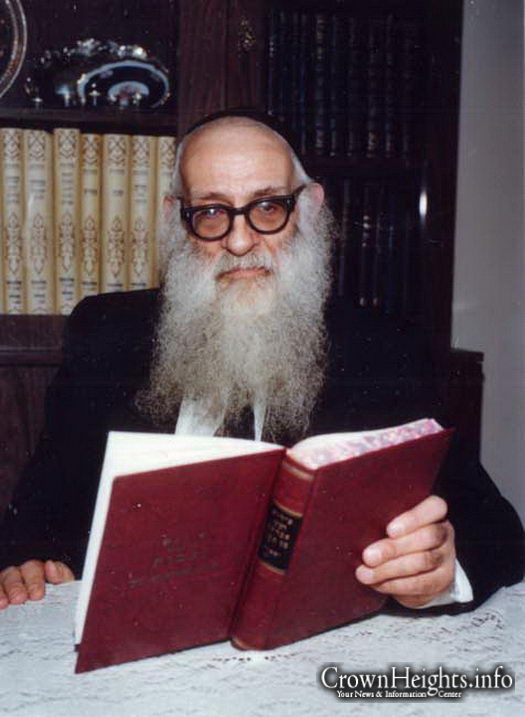
World War II
The peaceful days of Torah study came to an end with the outbreak of WWII. The city of Mir came under Russian control and the students traveled to Vilna. In Vilna, they found that the Russian government intended to exile anyone attempting to obtain a visa. After a short period of time, they were informed that the government was ready to issue exit visas to any student for two hundred American dollars. In addition to the difficulty of raising what was then considered a vast sum of money, the such a sum of money in those days, the students were uncertain if this was an earnest offer or a scheme to arrest students for requesting visas. On the other hand, to remain in Russia meant placing their lives in danger, spiritually and physically. In the midst of the debate, Reb Moshe Yehuda suggested they turn to the “Goirel of the Gra”, the Vilna Gaon. Since he was expert in this, he was asked to carry out this goirel. The Goirel gave them the verse (Shmos 19:4), “I will carry you on the wings of eagles and deliver you to me”. The message was clear, they needed to leave.
Prior to their trip, Reb Moshe Yehuda married the distinguished mchaneches, Miss Chaya Hena Shochat, from an honorable family in Telz, Latvia. The wedding, in 1941 on the 13th of Shvat, was a private affair with a limited minyan.
Under the supervision of Horav Leib Malin, one of the senior students, all of them applied for visas and were successfully able to leave Vilna. They continued the long voyage to the Far East, traveling through Vladivostok in Siberia, Russia to Kobe, Japan and settled in Shanghai. There, two of Reb Moshe Yehuda’s children were born.

Acquaintance with Chabad
In Shanghai Reb Moshe Yehuda was able to observe the Lubavitch students who arrived as refugees from Poland and acquaint himself with Chassidus Chabad. The relationship to Chabad also became a family link, when he and Rabbi Hodakov both married sisters and became brothers-in-law. Rabbi Hodakov obtained an affidavit for Reb Moshe Yehuda in 1947, enabling him to enter the U.S. Upon his arrival, he entered into Yechidus with the Previous Rebbe.
In one of his manuscripts from 1950, Reb Moshe Yehuda described what attracted him to Chassidus Chabad.
In Yechidus, the Previous Rebbe told him, “All other teachings address only separate and specific needs of the individual, whereas Chabad philosophy is the remedy for the entire soul as one entity. This comes about from meditating on the greatness of HaShem, which removes the individual from worldly pleasures and who thus becomes sanctified. This is better than the different ways of refining personal traits, because of what benefit is it if the branches are pruned but the roots are poisoned. Chabad Philosophy, on the other hand, contributes life to the soul. When the roots are healthy, then the branches are healthy, and surely the leaves and the fruit as well”.
The time to establish a livelihood had arrived. As an expression of gratitude to Hashem for the miracles he experienced during WWII, Reb Moshe Yehuda tried to find a spiritual profession. Reb Moshe Yehuda was notified that a relative owned a wealth of manuscripts of the Rishonim. When he reviewed them, he realized that they were rare and distinguished. Acting upon the advice of Gedolei Yisroel, he involved himself in the huge project of preparing these manuscripts for publication.
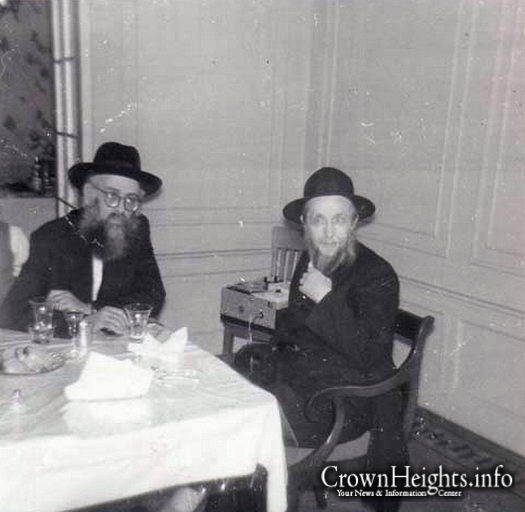
Publishing sforim
The first published sefer was that of the Ritba on the Tractate Bava Basro. A university offered Reb Moshe Yehuda a position as a lecturer in their institution but Reb Moshe Yehuda was hesitant. The Previous Rebbe advised him to accept the offer, but he was still concerned that he would become “polished”, or influenced by the environment. The Previous Rebbe responded “They will polish you?! You should see to it that you polish them.”
Rabbi Hodakov suggested that he consult the Rebbe’s son-in-law, the RaMaSh. The RaMaSh advised Reb Moshe Yehuda to publish the manuscripts with footnotes and references, as a scholarly work, which was not the common practice at the time. On this occasion, Reb Moshe Yehuda asked the RaMaSh a question which had disturbed him for a long time, “Why did the Vilna Gaon dispute the Alter Rebbe?” The Ramash responded that the Gro had been misinformed when he was told that the Tanya contained statements against the Torah. Since the Gra did not go out in the street, he trusted these stories.
The Rebbe’s miracle: a Chassidish Farbrengen
An additional event that brought Reb Moshe Yehuda closer to the Rebbe was the Rebbe’s miracle with Reb Moshe Yehuda’s niece, the daughter of Horav Hachossid Dov Yehuda Shochat of Toronto. A pan of hot water was accidentally spilled on the young child and her life was endangered. The Rebbe advised her father to make a Chassidish Farbrengen. When the Rebbe was told that the situation was getting worse, he advised the family to tell the doctors that they were administering the wrong medications. The child miraculously recovered. When the Rebbe was asked how he knew that the medications were wrong, he replied modestly, “When the correct medications are administered, it either cures the person or does not cause any reaction. In a situation where the administered medication caused a negative reaction, it is a sign that the medication is not the correct one”. This made a great impression on Reb Moshe Yehuda; not only his niece’s recovery, but the Rebbe’s modesty in offering a simple explanation for her recovery.
Reb Moshe Yehuda began attending the Rebbe’s Farbrengens on Yom Tov, walking from East New York to 770. When he became elderly and weaker, he would drive to 770 immediately after Yom Tov.

Divine Providence in the Research
The published Ritba manuscript was received with great acclaim and this encouraged Reb Moshe Yehuda to continue. He published manuscripts archived in the Marcus collection and other noted libraries such as that of the British Museum, the Oxford library and even the Vatican Library in Rome, to which he received entry through Divine Providence. The family pointed out that Reb Moshe Yehuda never entered the Vatican library himself but obtained copies of the manuscripts upon request.
The story was as follows. Reb Moshe Yehuda was in one of the popular Jewish libraries, and saw a priest, confused and upset, wandering around. Reb Moshe Yehuda asked the priest what he could do for him. The priest responded that he was researching the design of vowels used in Sephardic manuscripts a thousand years ago. This research towards his doctorate would result in a job promotion within the Vatican. Reb Moshe Yehuda explained that he was an expert in this field and could help, on condition, that in return the priest supply him with the specific manuscripts that he was seeking. He agreed and became the source of numerous manuscripts from the Vatican.
Reb Moshe Yehuda experienced another wonderful Divine Providence in his projects. On one of his trips selling sforim, the driver took him to the wrong address. Reb Moshe Yehuda thought, “Everything is by Divine Providence, perhaps someone living here is interested in purchasing a sefer.” The resident of the house was a carpet dealer and was not interested in sforim. He asked Reb Moshe Yehuda if he understood Aramaic, which he did. The dealer took out an old scroll that had been in the family for many generations and asked if Reb Moshe Yehuda could translate it into French. After studying the scroll for a short while, Reb Moshe Yehuda was in shock. The manuscript was a supplement to one of the Rishonim for which he had been searching many years.
On another occasion, when Reb Moshe Yehuda traveled to Montreal, he was given a box of antique sforim as a gift. Reb Moshe Yehuda accepted it out of respect, but thought to store it in Shaimos. When he opened the box, to his joy he discovered many manuscripts of the Rishonim.
Reb Moshe Yehuda worked exhaustively on his own, without secretarial, research or financial assistance, for fifty years. He prepared the manuscripts and published the writings of Rishonim, concealed until that time. He was successful in publishing over forty volumes. At times, he had to follow very obscure leads and clues to identify the authentic author of a manuscript. In one such an instance, it took him seven years of research to find the answer to the riddle.
His study of Torah was seemingly limitless. Although he was occupied with research, he would designate long periods of time for shiurim in the mornings and evenings to study. In the morning, he studied for three hours and in the evenings he would study many pages of the Tractate Brochos and only after he completed his daily study would he eat. On Yom Kippur, he would begin his day at 5 A.M. in order to complete his studies before Shacharis.
Every year he traveled to Jewish communities within the United States. and Canada to publicize his sforim. In order to develop public interest, he would speak on subjects that kept the listeners spellbound. The Rebbe advised him to speak on practical topics and so he began speaking about the Mivtzoim. On one of his trips, the Rebbe told him, “You should relay to the people, that the yud in Tefillin and Mezuzas needs to be written with a certain design. Without the design, new Tefillin and Mezuzas are necessary”. The Rebbe referred to a certain city to which Reb Moshe Yehuda was traveling and added, “Probably there is sofer there. If not, bring one from outside”. Reb Moshe Yehuda arrived in the city and found no reliable sofer. He brought a sofer from N.Y. and announced that the sofer would check everyone’s Tefillin and Mezuzas free of charge, with the condition that if the Tefillin were found defective, they would not be sewn and resealed.
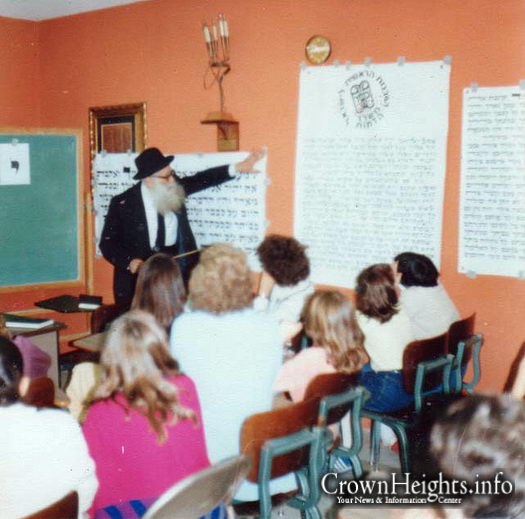
Mivtzoim
The same process took place in other cities. During the course of many years, Reb Moshe Yehuda successfully brought sofrim to numerous Jewish communities, in addition to speaking publicly about the necessity of having kosher Tefillin and Mezuzas. When Tefillin were found to be posul, he would replace them at subsidized prices.
The Mivtza Tefillin was very beloved by him. In his will he wrote, “One who wants to please me (after my passing) should involve himself with Tefillin and Mezuzas for the benefit of the public.” He requested that on his matzeva should be engraved, “Anyone benefiting the public with Tefillin and Mezuzas will receive an award from heaven”.
The manner in which he publicized Mivtza Tefillin and Mezuza, was used to institute the custom of Seudas Moshiach in the shuls where he served as a Rav; in the Ahavas Achim Shul in the East New York section of Brooklyn for twenty years, followed by more than thirty years in the Avrohom & Tzvi Hirsh shul, in Boro Park, although the congregants were not Lubavitch Chassidim. Reb Moshe Yehuda was loyal to the Rebbe’s directives, and without quoting the Rebbe as the source, he introduced all of the Rebbe’s directives and Mivtzoim to his congregants. He instructed them to appoint a Rav or Mashpia for themselves, urged everyone to study the daily quota of Rambam, as well as many additional directives from the Rebbe.
In 1987, the Rebbe initiated “Shnas Habinyan” directing everyone to build and expand. Reb Moshe Yehuda immediately ordered an architect and began broadening the basement of his shul, which resulted in the creation of a shul for the young people of his community.
His wife was nifter in Kislev of 1983, and the Rebbe agreed that Reb Moshe Yehuda’s daughter could move to Boro Park, so that her father would not remain alone. The Rebbe added that this should not hinder Reb Moshe Yehuda’s search for a shidduch. With Kabbolas ohl, Reb Moshe Yehuda interested himself in this matter and in a short period of time married Mrs. Ita Onsbacher.
On the third of Iyar, the yahrzeit of his admired brother-in-law, Horav Hodakov, Reb Moshe Yehuda was nifter exactly ten years later, at approximately the same hour.
He left his wife, Mrs. Ita Blau of Borough Park; his sister, Mrs. Rivka Marmorshtein, of London, England; his sons, Horav Menachem Meir, the founder of Crown Heights Hotline, relaying the news in 770 and Horav Reuben, the founder of 770live.com, both of Crown Heights; his daughters Mrs. Nechama Kastel of Crown Heights, the wife of Rabbi Kasriel Kastel, director of Lubavitch Youth Organization; Mrs. Rochel Elishevitz of Brooklyn NY, the wife of the Rabbi Yosef Elishevitz, the Rav of the Caucasian minyan, Ohr Hamizroch; grandchildren who are following the teachings of Torah and Chassidus; and the numerous sforim that he brought to light.
Yehi Zichro Boruch! May Rabbi Blau, a legendary chossid known for his strong sense of discipline in his daily schedule of study, complete devotion to the compilation and publication of the writings of the Rishonim, unknown for centuries, and commitment to the spread of Mitzvos, serve as the inspiration to discipline oneself in all aspects of life, to utilize every spare moment in a meaningful manner, to share words of Torah with the people in our midst and to be committed to spreading Torah and the Rebbe’s Mivtzoim.
We should speedily witness “The ones who dwell in the dust will awaken and rejoice” with Rabbi Blau among them.
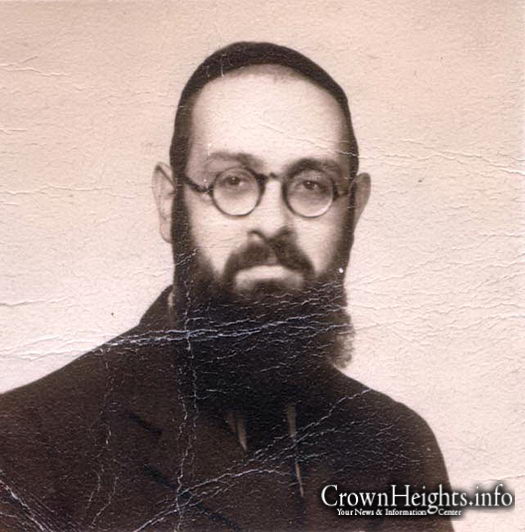















Wow!
Beautiful!
Inspiring
Thank you for posting
Interesting
In the gorel haGra he came to the posuk “and I will carry you on the wings of an eagle and I will bring you to me”.
It so happens to be that the words of that posuk “kanfei nesharim v’avi” is gmatria 770.
So he was shown in the gorel hagra that he will eventually be brought to 770.
Michoel Dovid
A very interesting article. Where can one find these seforim on the Risonhim for sale? Have they ever been reprinted again?
very inspiring article
they can be purchased through his son who can be reached at 646-469-9419 . Leave a message.
learn so much from these articles
thank you
very inspiring article
such great people !! It ispires other to be like them. thank you for publishing.
a shliach
In 1980 he visited the yeshiva in LA, he gave us a shiur on how to recognize easily a printed mezuzah.
The tips he gave us in that class I use till today whenever i visit a home for mivtza mezuzah.
wow
what’s most important is that we actually learn from them like the rebbe would often say vehachai yiten El libo
Thanks for posting
So nice to read
excellent article
WOW! Fascinating to see the connection with Rabbi Hodokov, a brother-in-law, and the Schochet Family and the famous Rebbe story about their daughter. These are GIANTS who lived among us! Seems that Rabbi Hodokov got all his Brother-in-laws to become Chassidim of the Rebbe. After all, he was a true soldier of the Rebbe!
boro park
Beautifuly written! Thank you!
Very Inspirational!
Beautifully written! May my grandson, Moshe Yehuda Abramson, who is named after him, follow in his hielige footstep! May his memory be for a blessing!
thank you
thank you for publishing this article in honor of his 10th yahrtzeit yesterday, Shabbos.
What a giant of a person.
Mendy
Thanks Rabbi Zeligson for this inspiring article!
to #4
They were available by Rabbi Kastel or Rabbi Blau in Crown Heights.
questioner
Can anyone provide information about what was written concerning the letter Yud in Tfillin’? How it has to be written to be kosher accd to the Rebbe? thanks
Jason
I am calling off my plans to intermarriage after reading this and am going to re acquire my chabad seforim
Beautiful!
Wow!
Very special!
Hodakov siblings or sibling-in-laws
Anyone know who else is a silbling to Rabbi Hodakov or the rest of his brother/sister-in-laws? Did they all become Lubavitch?